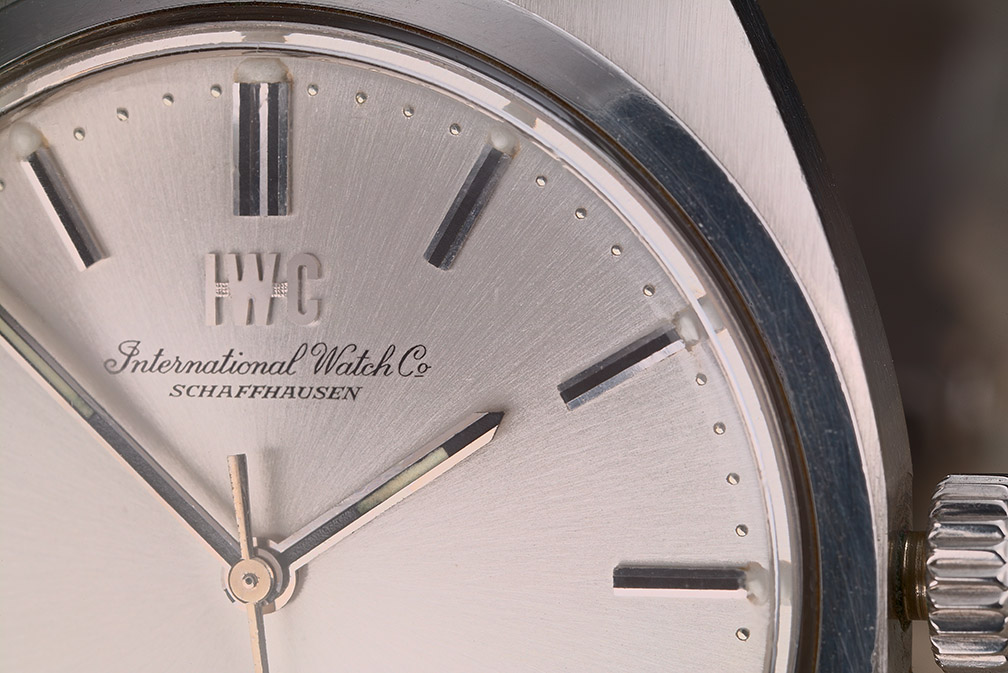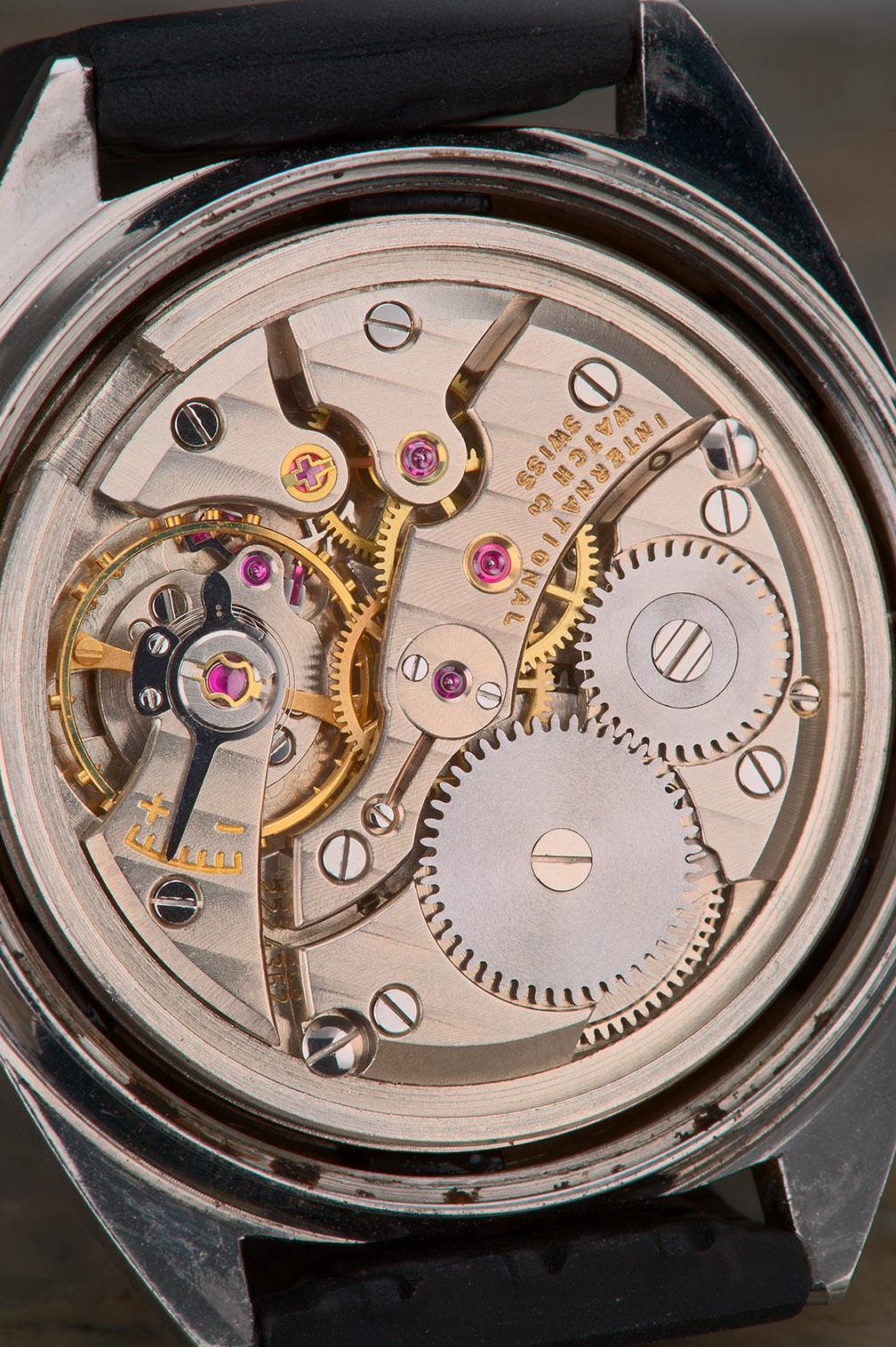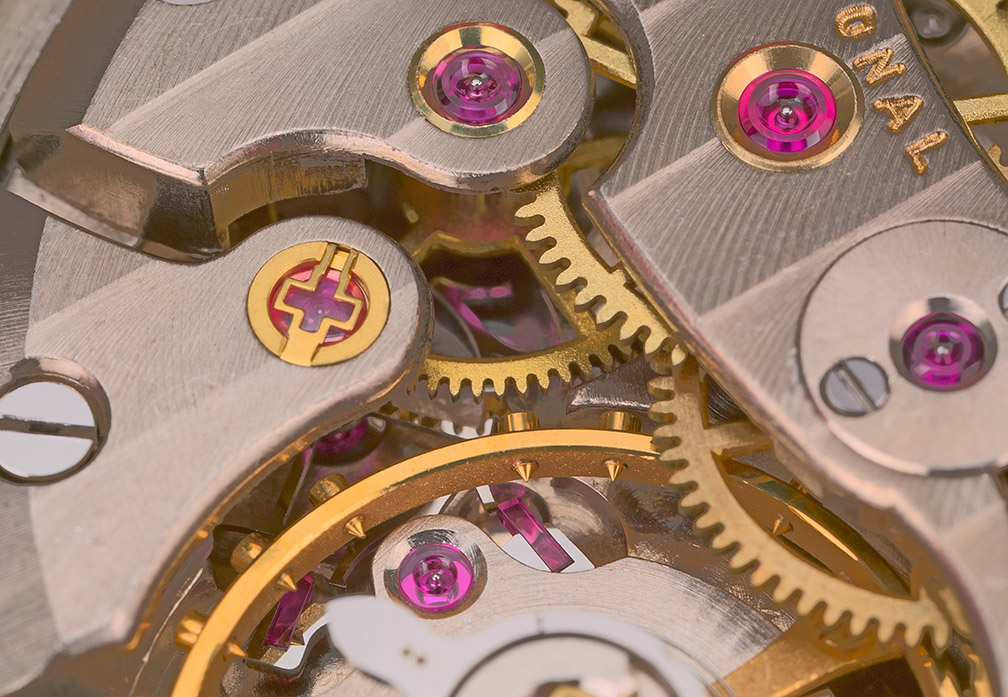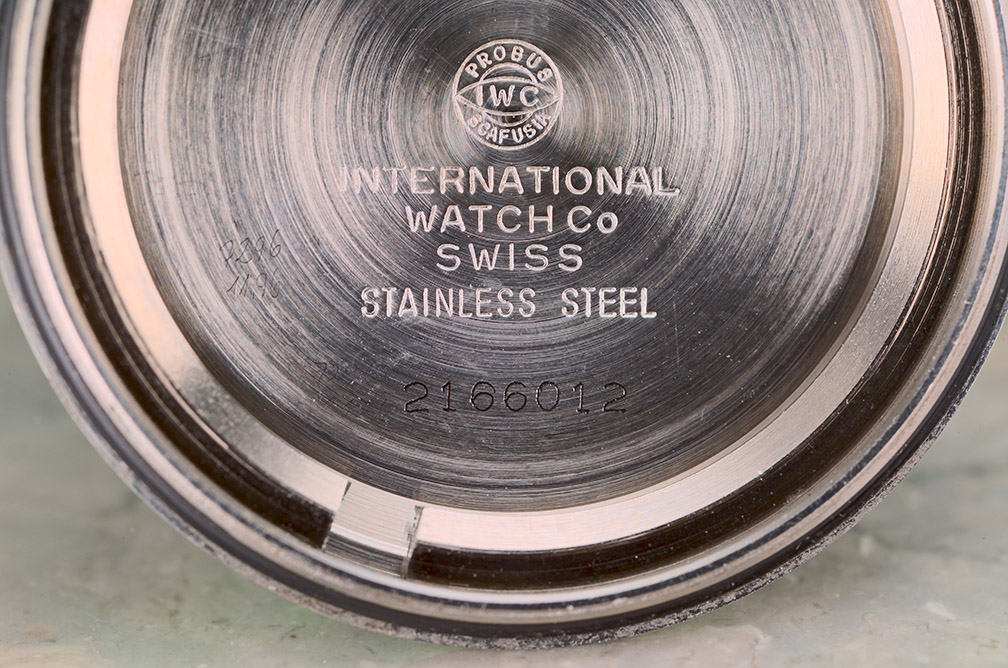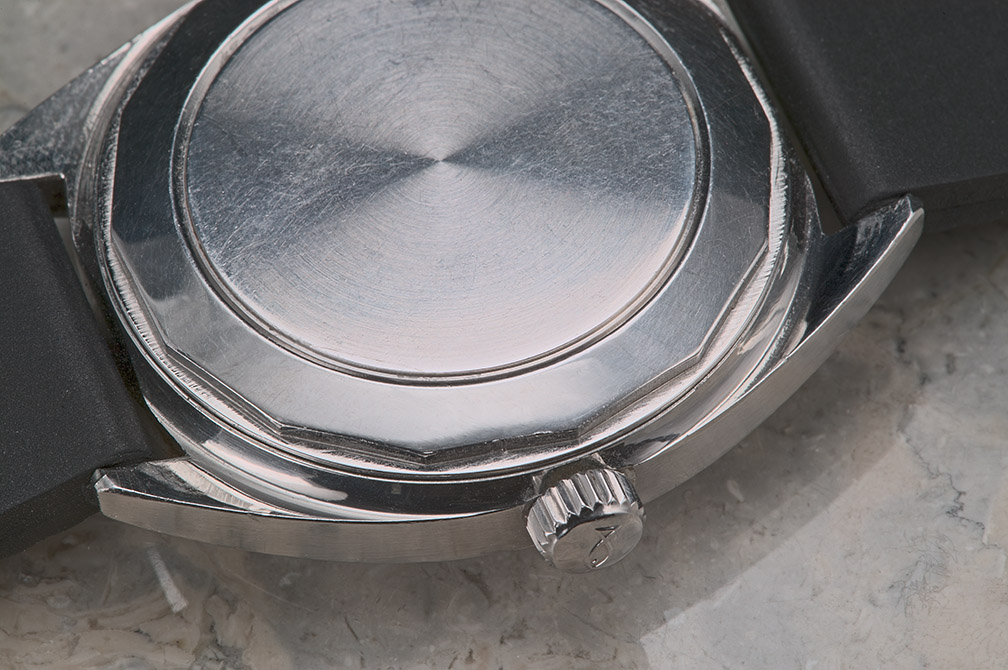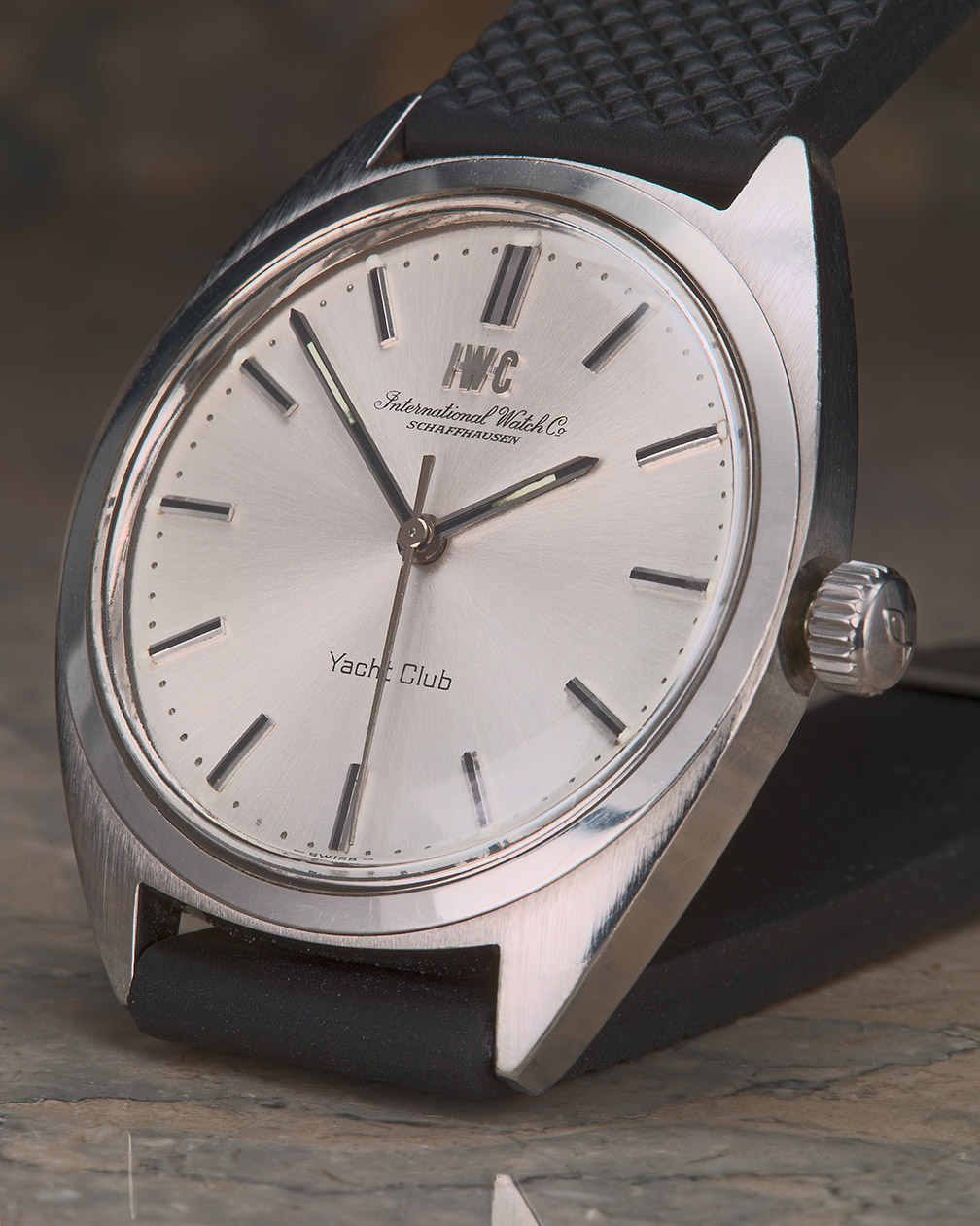In the early 1970s, the domination of the industry by quartz-controled wristwatches presented an interesting crossroads for the International Watch Company, and like almost every other Swiss manufacture, IWC coped with these titanic changes in ways that ranged from apparently prophetic to clearly (in hindsight) misguided. They revived the production of pocketwatches, even encasing the 1920s-vintage caliber 9521 as a wristwatch, the huge (and untra-thin and unexpectedly beautiful...) giant Portofino, and IWC was an early client of the great Gerald Genta, commissioning a revolutionary redesign (which survives even today, three decades later!) for their flagship Ingenieur. The balance of their line consisted of a "stylish" Aquatimer dive watch, an ever-shrinking supply of traditional thin dress watches, and the sports-oriented Yacht Club.The present watch is of this latter model, and its niche in IWC's market would be between the various dress watches and the ultra- -waterproof Aquatimer and -rugged Ingenieur. In the contemporary segmented market such a watch is easily understood, but my impression is that almost 40 years ago the Yacht Club was rather lost. Launched in the late 1960s, it was stainless steel, and too large for business attire, not as prestigous and historic as the Ingenieur, and within a few years far too staid (and probably pricey) for casual/sport use. Perhaps it was rightly named; a stylish and expensive but durable weekend watch for affluent men.
Today this Yacht club is a sporty, mid-sized (36x42mm tonneau) steel watch, tough enough for daily wear but thinner and far more elegant than most modern competitors. Although neither dive-rated nor an Ingenieur, being an IWC it is no wimp, and it is sufficiently water- and shock-resistant to enjoy without much concern despite its vintage status. Unusually, this particular watch provides no date function, suggesting the special surprise inside...The top and flanks of the lozenge-shaped case are nicely brushed, with only the bezel brightly polished.

